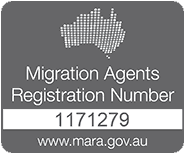People who apply for a Skilled Visa – and subsequently experience a long wait for a decision – start to become restless (as they are understandably keen to have some certainty in their life plans). This leads them to compare their situation with others; applying their own probability model to the chance of their visa being granted within x time, and becoming increasingly anxious when they see a person granted a visa which was lodged after theirs. (Sometimes as migration agents we cop abuse when that happens! Note – migration agents cannot influence processing times!)
People create all sorts of spreadsheets and charts, based on self reported figures, in an attempt to predict whether they will be next off the grant table. While these might be an interesting distraction while waiting, you’re more likely to get a true sense of where you sit ‘in the pile’ by understanding how the Department makes processing decisions.
We’ve heard stories circulating on social media about grants and non-grants, and even predictions that no offshore visas will be granted until July 2021.
In this blog, I’m going to debunk a lot of the myths being circulated, and explain how visa processing is being managed at the moment.
Has the Department stopped processing offshore visas?
First and foremost – the Government has never stated that it won’t be processing visas. However, the Government has introduced, by Ministerial Direction, an ‘Order of Processing’, which must be followed by Departmental case officers.
It’s the Order of Processing directives that are causing some visas to be granted quickly, while others languish on the pile, with seemingly no end in sight.
Section 499 of the Migration Act provides that the Minister may determine an order of consideration for visa processing. To date, there have been 88 separate Directions issued since 2003, many of which are now revoked. Since COVID became an issue, there have been two significant Directions which are now affecting the Skilled and Employer Sponsored Visa processing times.
Below is an outline of the one most likely to affect skilled visa applicants.
Direction 87 – Order of Consideration – Certain Skilled Migration Visas.
This Direction commenced on the 1st September 2020, and applies to the Department of Home Affairs and the Administrative Appeals Tribunal. Visa Processing must occur in this order.
- Employer Sponsored, or Regional Sponsored Visas which have an occupation on the Priority Migration Skilled Occupation List (PMSOL); all Global Talent visa applications; and Subclass 188 Business Visas (with Significant Investor Visas being top priority of the 188’s.)
- Visa applications which have an occupation within a Critical Sector
- Employer sponsored visas under a Labour Agreement under a DAMA
- Subclass 494 – Employer Sponsored Regional (Provisional) Visas.
- Subclass 491 – Skilled Work Regional (Provisional) Visa
- Employer Sponsored Visas (Subclass 482 and 186)
- Subclass 187 – Regional Sponsored Migration Scheme
- Subclass 489 – Skilled Regional (Provisional)
- Subclass 190 – Skilled Nominated
- Subclass 189 – Skilled Independent
- Everything else
Further, for visas in categories 3-11, priority will be given to onshore applications (where applicants already reside in Australia) ahead of offshore applications.
Is the Direction strictly adhered to?
The Direction is binding on decision makers and must be followed. What it means is that as a visa application flows into the system, it is sorted in accordance with the priority list. The Department and AAT must process in order of priority, and can only move to lower priority cases once they have cleared the higher priority cases.
What does this mean for you?
Depending on where you fall in the Processing Order, it could mean a longer than usual wait for your visa. For example, people waiting on a Subclass 190 visa will note it’s the second lowest priority for processing.
Those people who are adamant they only want a Subclass 189 visa – given it’s the least likely to be approved at the moment, is that still your ambition?
However, if your occupation is on the PMSOL and you’ve been offered employer sponsorship, it should be processed quickly.
Bear in mind that people who are offshore, and want to be granted a visa which is not permanent, need to also obtain a Travel Exemption, before a visa can be granted.
What can you do to improve your chances of a Visa Grant?
- Having an occupation on the PMSOL is a massive advantage
- Working within a critical sector also helps
- Having a job offer, or an employer sponsor, can help greatly
- Being prepared to move to a Regional Area, gives you a higher priority
- People who are already in Australia and working, may be prioritised
What if you’re stuck in the system?
Unfortunately there’s not much you, or anyone, can do. Sometimes onshore clients have had success by obtaining support from their local members of parliament – other times we’ve seen standard responses come back in spite of lobbying.
2021 could be another tough year. Let’s hope that there is some light at the end of the tunnel.
Would you like to discuss your Skilled Visa opportunities? Please bear in mind we can’t magically expedite your case. However, we are happy to give you an honest opinion as to whether you should consider lodging a visa application at this time.
Contact us to arrange an appointment.
We’re always trying to provide helpful, professional information to keep people updated with migration changes, along with our “plain English” explanation. Subscribe to our Newsletter below, if you’d like to be part of our community.





